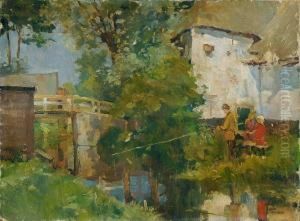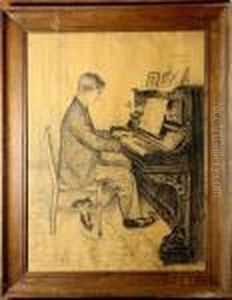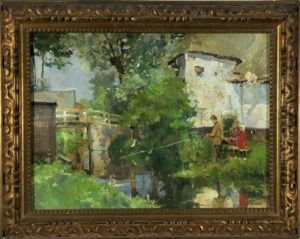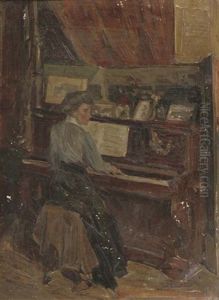Jan Rinke Paintings
Jan Rinke was a Dutch artist, illustrator, and painter, known primarily for his works in the realm of book illustration and printmaking. Born on December 11, 1863, in Wormerveer, the Netherlands, Rinke developed an interest in the arts at an early age.
During his career, Rinke gained a reputation for his detailed and evocative illustrations that often accompanied children's books and popular Dutch literature of the time. His style was characterized by intricate line work and a clear influence from the Art Nouveau movement, which was popular throughout Europe at the end of the 19th and the beginning of the 20th centuries.
Not much is widely known about Rinke's personal life or his artistic training, which is a common occurrence with artists who were not at the forefront of major art movements or whose works were more commercial and less present in fine art galleries. However, his contributions to the world of book illustration were significant, as such works are vital in engaging younger audiences and bringing stories to life.
Rinke's work extended beyond the pages of books, as he also ventured into the world of printmaking, producing posters and graphic art. This was a time when the printed image was gaining widespread popularity due to advances in printing technology and the growing middle class's interest in art consumption.
Jan Rinke passed away in 1922, leaving behind a legacy as a skilled illustrator who contributed to the visual landscape of Dutch literature. While he may not be as widely recognized as some of his contemporaries, his work remains a testament to the importance of illustration in the cultural fabric of the Netherlands during the late 19th and early 20th centuries.



